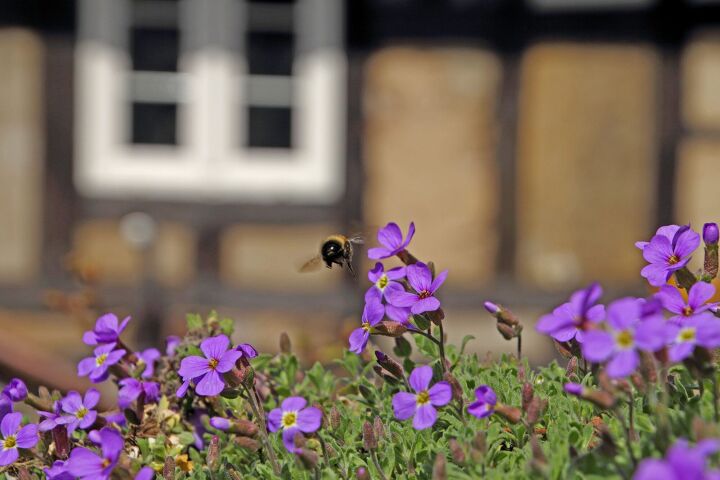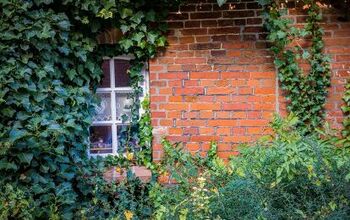What To Put In A Pollinator Garden

Pollinator gardens have risen in popularity over the last several years. Homeowners, gardeners, and conservationists alike have realized how important it is to nurture an ecosystem with pollinators. Understandably, many homeowners struggle with what to put in a pollinator garden.
The best plants to put in a pollinator garden are milkweed, yarrow, red buckeye, phlox, and stonecrop. Plants like goldenrod, butterfly bush, beardtongue, and marigold produce lots of nectar and pollen as well. Aromatic plants like oregano, lavender, verbena, and coneflower attract bees, hummingbirds, and butterflies.
Any plant that likes full sunlight and produces nectar and pollen will be great for your pollinator garden. Follow along as we explore what to put in a pollinator garden and highlight why these plants will benefit your yard.
What Needs To Be In A Pollinator Garden
1. Milkweed
Milkweed is one of the most visually appealing and practical plants to put in a pollinator garden. This colorful plant is notable for its unique flowers that attract butterflies and bees. These herbaceous plants produce lots of nectar, which will attract essential pollinators to your garden.
Some homeowners water milkweed each day, and that may be necessary if you live in a hot climate with little rain. Otherwise, you can water milkweed every three days unless the soil dries out.
2. Yarrow
Instantly recognizable for its clusters of white flowers, yarrow is one of the best plants to put in a pollinator garden. Yarrow requires full sunlight, but you only need to water it a few times per month. It’s a drought-tolerant plant, and it attracts bees and butterflies.
However, you should make sure that you don’t have a yarrow allergy before you plant it. Yarrow allergies are common, and the pollen the plant produces can easily spread through the air.
3. Red Buckeye
Red buckeye is a popular plant for pollinator gardens. It produces nectar and smell pleasant to pollinators like bees, butterflies, and hummingbirds. Red buckeye is a low-maintenance plant, as it typically only needs water 2-3 times per week.
The high pollen content of red buckeye ensures that it will spread throughout your garden. Ideally, you should plant red buckeye in early spring, so it will get a good start and grow quickly.
4. Phlox
Everything from the shape and color of the flowers to the nectar it produces makes phlox essential for pollinator gardens. Phlox provides great ground cover in any pollinator garden, and the tubular leaves attract butterflies and hummingbirds. The blue leaves will also add color to your garden, and pollinators have a hard time resisting them.
Phlox can handle some shade later in the day, but you should plant it in a mostly full sunlight spot. It only needs an inch of water per week, but you can water it as needed to keep the soil moist.
5. Stonecrop
Stonecrop attracts butterflies and bees alike, and it’s easy to take care of. It thrives in full or partial sunlight and only requires water once per week in the summer. These plants can often survive for quite a while throughout fall before heavy frost hits.
You won’t have to worry about deer and pests destroying your stonecrop, as they often pass over it. Stonecrops can also bounce back from trauma quickly if you consistently take care of them.
6. Goldenrod
Goldenrod attracts hummingbirds, bees, and butterflies. They will feast on the nectar that goldenrods provide and transfer the pollen to the other pollinators in your garden. Goldenrod thrives in well-drained soil with as much sunlight as possible.
An annual, you will have to plant goldenrod each year. However, it’s worth the effort, as it’s one of the best plants for a pollinator garden, and it blooms prolifically.
7. Butterfly Bush
Butterfly bushes are the best perennials for any pollinator garden. They will come back each year and attract pollinators to your garden. Butterflies aren’t the only pollinators that butterfly bushes attract, as bees and hummingbirds love them as well.
Ideally, you should plant butterfly bushes in early spring or fall for the best results. They can only thrive in partial shade if you live in a warm climate, but otherwise, they require full sunlight.
8. Beardtongue
Penstemon, better known as beardtongue, is a colorful plant that produces lots of pollen. The pink and red flowers make beardtongues stand out in any garden. Like most pollen-heavy plants, beardtongue does best in full sunlight.
Beardtongue is one of the best plants to attract hummingbirds, but it appeals to other pollinators like bees. Make sure to keep the soil moist and give your beardtongues at least 1” of water per week.
9. Marigold
Not only do marigolds produce plenty of pollen and nectar, but they can also add color to your garden. Marigolds love sunlight and you only need to water once per week unless you are experiencing a drought or excessive heat. They are quite sensitive to overwatering, however, so only water marigolds if the soil is dry.
Marigolds continue to bloom and attract bees and butterflies until fall. Another benefit of marigolds is that they help deter pests that would otherwise threaten your garden, such as rabbits and deer.
10. Lavender
Known for its colorful flowers and pleasant scent, lavender is known to attract many pollinators. Bees and butterflies flock to lavender as soon as it blooms because of the strong scent. It produces both pollen and nectar, which the bees will spread throughout your yard.
It also helps to keep lavender around if you have a problem with flies and mosquitoes in your yard. Mosquitoes hate the scent of lavender and will avoid it at all costs. You can also use lavender as a garnish or to make tea.
11. Verbena
A popular source of nectar for bees and butterflies, verbena is a staple in many pollinator gardens. Butterflies especially love verbena because of the unique tubular flowers the plant is known for. Verbena comes in annual and perennial varieties, depending on the type it is as well as the zone you live in.
The lemon scent that verbena produces also deters mosquitoes. Make sure to plant verbena in a spot where it will get sunlight for most of the day so that it grows to its fullest potential.
12. Oregano
Growing oregano gives you more fun cooking options in the kitchen, and it’s also popular among bees and hummingbirds. It thrives from late spring through fall, and it can even survive the winter in warm climates. Oregano attracts pollinators because of the distinct smell that it’s known for.
While it does best in full sunlight, oregano can survive in partial shade as long as it gets at least 6 hours of sun per day. You can help deter pests with oregano as cucumber beetles and cabbage butterflies avoid the plant.
13. Coneflower
Bees love coneflowers because of how much nectar they produce. The shape of the flowers makes it easy for bees and butterflies to get covered in pollen that they will eventually spread to other plants. Most varieties of coneflowers attract pollinators, but purple coneflowers are particularly effective.
Coneflowers only need an inch of water per week when in partial shade. However, you will likely need to water them more frequently if you plant coneflowers in full sun where they thrive best.
Why Do We Need Pollinator Gardens?
Pollinator gardens are important because they help attract birds, bees, and hummingbirds to your garden. They will help spread pollen throughout your garden and nurture a healthy ecosystem in your yard. Your plants will grow more quickly and you will notice more blooms when they are consistently pollinated.
Most importantly, pollinator gardens help protect butterflies and other pollinators by providing them with a steady food source. Without pollinators, plants and animals would struggle to survive, leading to major problems in our ecosystem and the economy. That is why there have been many recent efforts to protect bees and other pollinators.
Summing It Up
Milkweed, yarrow, red buckeye, phlox, stonecrop, and goldenrods are the best plants to put in a pollinator garden. Other plants like oregano, coneflowers, verbenas, and lavender attract pollinators. Whether it be marigolds or beardtongues, it’s important to put as many plants as possible that produce lots of nectar and pollen in your garden.
Related Guides

Nick Durante is a professional writer with a primary focus on home improvement. When he is not writing about home improvement or taking on projects around the house, he likes to read and create art. He is always looking towards the newest trends in home improvement.
More by Nick Durante













![10 Best Cordless Leaf Blowers – [2022 Reviews & Ultimate Guide]](https://cdn-fastly.upgradedhome.com/media/2023/07/31/9070789/10-best-cordless-leaf-blowers-2022-reviews-ultimate-guide.jpg?size=350x220)








![How To Reset A Whirlpool Cabrio Washer [In 5 Easy Steps!]](https://cdn-fastly.upgradedhome.com/media/2023/07/31/9076531/how-to-reset-a-whirlpool-cabrio-washer-in-5-easy-steps.jpg?size=350x220)




